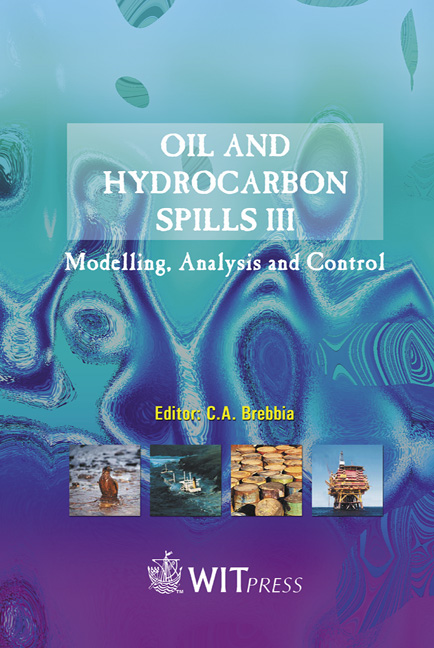Space-based Surveillance And The Role Of SAR For Operational Oil Slick Detection And Monitoring
Price
Free (open access)
Transaction
Volume
59
Pages
Published
2002
Size
879 kb
Paper DOI
10.2495/OIL020391
Copyright
WIT Press
Author(s)
S. Chesworth & P. Engel
Abstract
Space-based surveillance and the role of SAR for operational oil slick detection and monitoring S. Chesworth1 & P. Engel2 1 RADARSAT International, United Kingdom 2 RADARSAT International, France Abstract Shipping accidents and the resulting catastrophic oil spills have received widespread public attention, illustrating the problems associated with vessel transportation and the subsequent degradation of the marine environment. However, these spills only make up a relatively small proportion of the total amount of oil pollution that occurs at sea. Large amounts of oil are deliberately released everyday through the discharge of bilge and ballast waters and these are going undetected. Also, leakages occur from oil platforms and pipelines adding to pollution. Many countries do not have the resources to effectively monitor more than a small proportion of their Exclusive Economic Zone (EEZ). This paper reviews past and current experiences of RADARSAT International and its partners using SAR data from RADARSAT-1 for operational monitoring of oil spills and the illegal and uncontrolled discharge of pollution. Case studies will be presented where SAR is used operationally for oil slick detection and oil spill monitoring by providing near real time target reports and image sub-scenes delivered electronically to the client. These current operations show that SAR is a valuable component to effective monitoring and response in conjunction with sea and aerial based surveillance. Important information about the ship can also be transmitted to the client showing synergy with vessel monitoring system providers (VMS), coastal radar operators, Coastguards, patrol craft and response teams. The next generation of SAR satellites is then reviewed which provisionally demonstrates the improvement of the new sensors for tactical operations and the vision of a global oil pollution control and deterrent system.
Keywords





